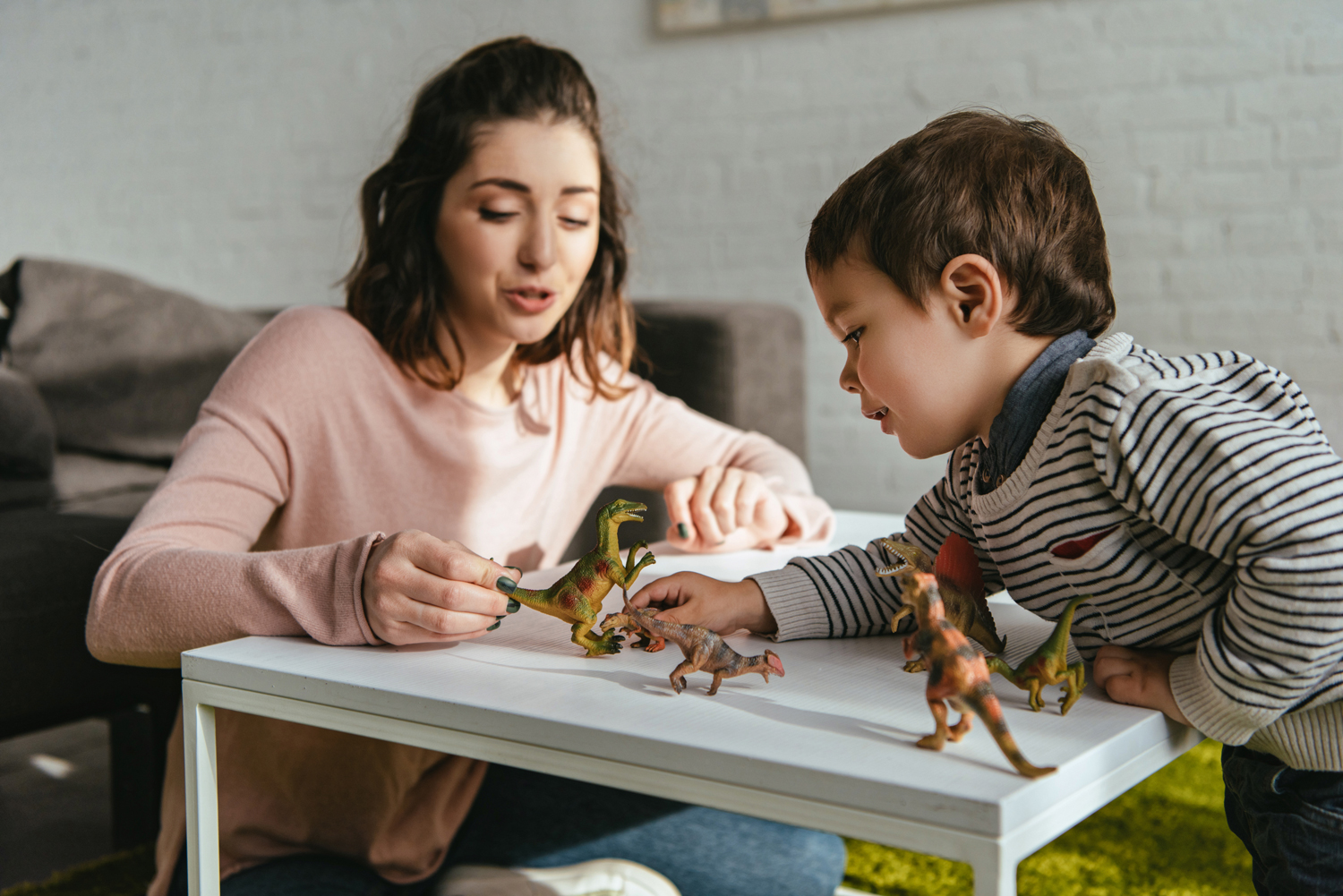Include Your Child’s Interests: Building Interaction with Autistic Children

Like all children, autistic children learn best when they are having fun interactions with the important people in their lives. So, the first step in helping your child learn to communicate is to find ways to have back-and-forth interactions that you both enjoy.
Sometimes you may not be sure how to get an interaction started with your child, especially if they often play alone or have specific or unique interests. One of the best ways to start a back-and-forth interaction is to Include Your Child’s Interests.
Including Your Child’s Interests means joining in with whatever your child is playing with, without changing it or telling them what to do. Whatever your child is doing at that moment is interesting and fun to them, and if you join in and play your child’s way, it’s likely to spark an interaction!
There are three steps to Include Your Child’s Interests:
- Observe your child’s interests
- Join in
- Stop and wait
Step 1: Observe your child’s interests
Watch your child closely and notice what they are doing. Think about the following:
- What is your child playing with?
- What exactly is your child doing with the toy or object?
- What is it about that action that interests your child?
Once you figure out your child’s interest, you’re ready to join in.
Step 2: Join in
There are a few ways to join in with your child:
- Do the same thing as your child – Join in by doing exactly what your child is doing. If your child is pushing a car, get your own car and push it near them. If your child is lining up blocks, grab your own blocks and make your own line-up nearby. If your child is rolling balls across the floor, roll your own ball across the floor. When you do exactly what your child is doing, they might notice what you’re doing and start to interact with you.
- Make a comment – Make a comment about what your child is doing and, when possible, point to the toy as you comment. For example, as your child rolls the ball across the floor, point to it as it’s rolling and say, “It’s rolling!” or “Whee!” As you and your child push cars together, you can say “Vrooom!” or “Let’s go fast!” By doing this, you are saying words that match your child’s interests, making it more likely your child will learn about the words that match their ideas and actions.
- Turn it into a game – Some actions are easy to turn into a little game, and this can be a fun way to join in with your child. The important thing is to make sure you don’t change the play and that you keep Including Your Child’s Interests. For example, maybe your child would like to push their car at the same time as you, like a race. Or maybe your child would have fun crashing their car into yours while you push them together. Watch the video below for another example of how to join in by turning your child’s interest into a game.
Joey is autistic. In the video below, Joey’s mom observes that he loves jumping. She includes his interest by joining in, turning it into a game, and using words to talk about what they’re doing. Watch how this starts a fun interaction.
You might have noticed that Joey’s mom stopped and waited during the game to see what Joey would do next. When she waited, he touched her arm to let her know he wanted to keep jumping. Waiting is an important step when you Include Your Child’s Interests.
Step 3: Stop and wait
After you copy your child or take a turn in the interaction, stop and wait to see what happens next. Watch your child closely to see if they are still interested. If they keep the game going by doing another action, smiling, looking at you, or saying something, keep the interaction going by taking another turn. Then wait again. By waiting, you are showing your child that it’s their turn to do something, and this keeps the interaction going. Waiting also gives your child a chance to communicate.
When you Include Your Child’s Interests, you are sure to have some fun back-and-forth interactions. And when your child is interested and having fun with you, they will have many opportunities to send you messages, as well as learn how interactions work. This is when the best learning takes place!
Interested in learning more about how to keep the interaction going? Take a look at our More Than Words® guidebook.
Similar articles by tag:
